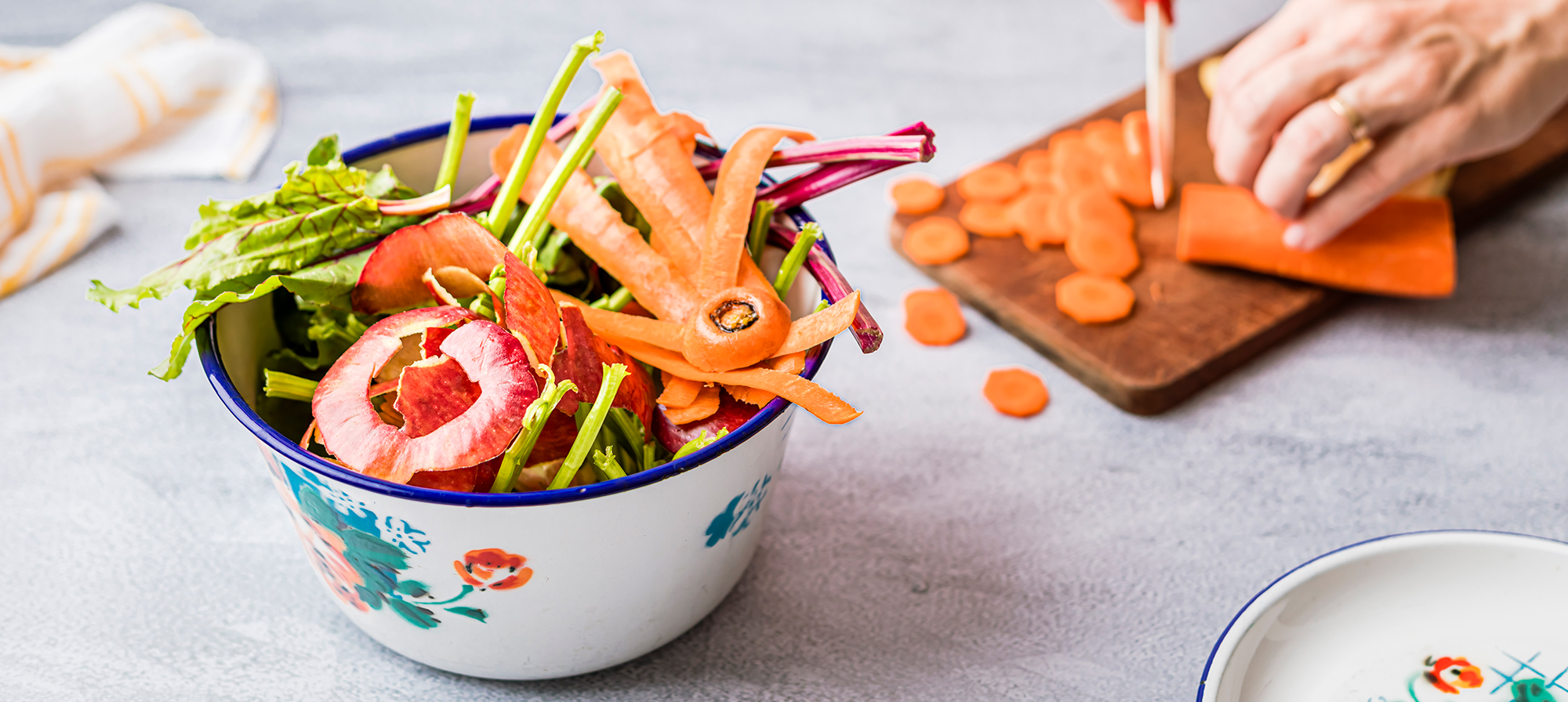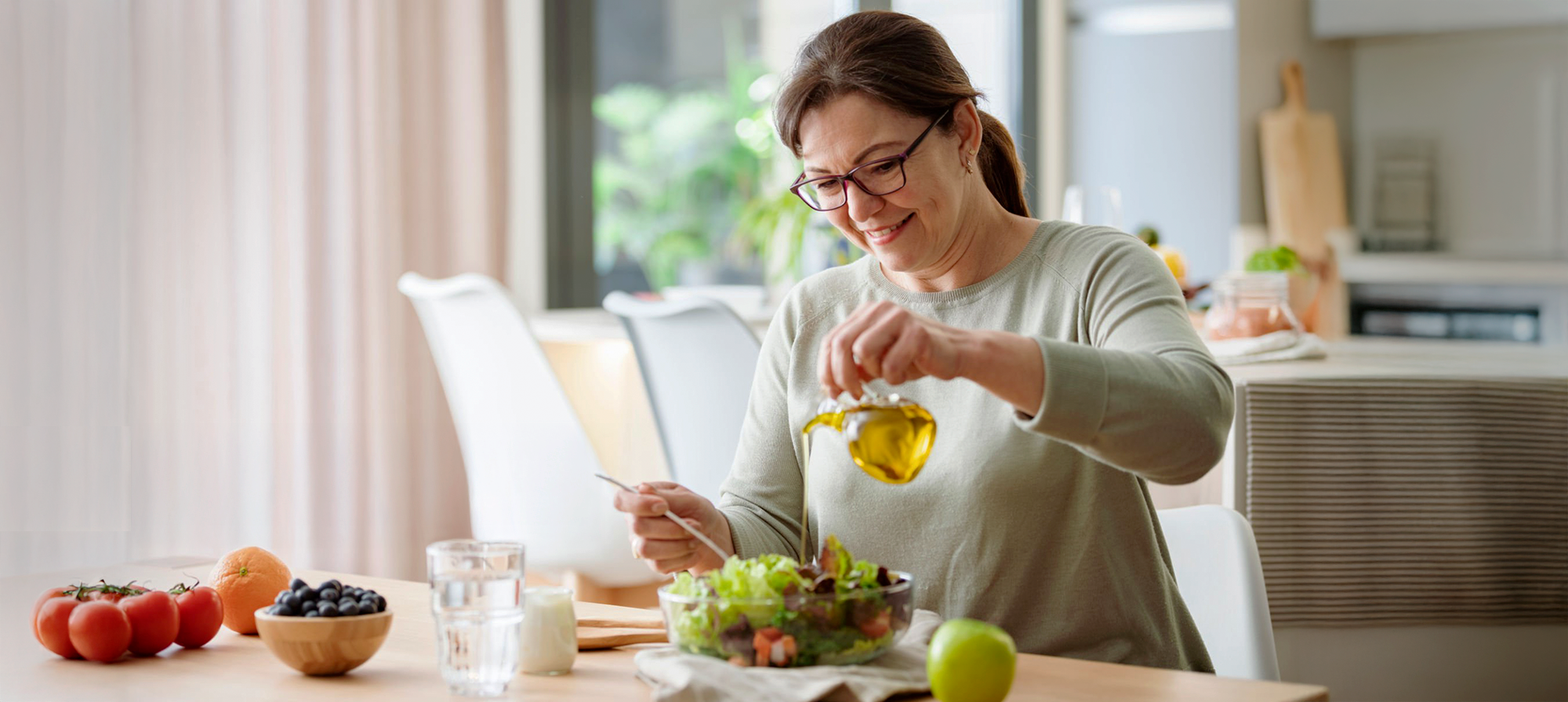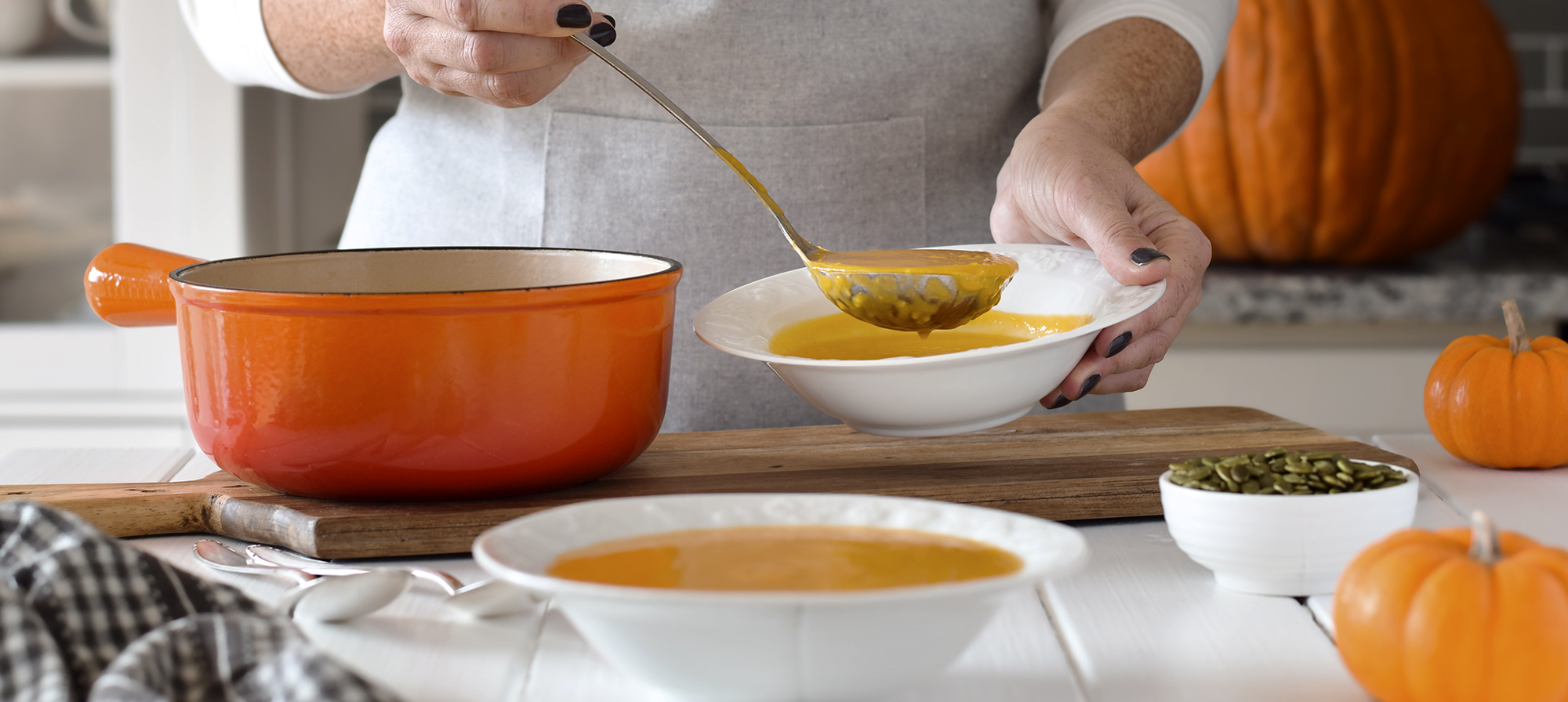Americans throw away about 30 to 40 percent of their food each year. Learn how you can help reduce food waste, cut costs, and even help the planet.
You go to the market every week or so to stock up on groceries. When you get home, you prep your veggies. You wash the kale and place it in your veggie crisper, then put the bananas in a bowl with the potatoes and set your apples on the counter.
Within days, your potatoes are rotting, your kale is yellow and wilting, and your apples are mushy. Like many Americans, you end up throwing this food waste in the trash.
Now, consider this waste on a much bigger scale. The U.S. Department of Agriculture (USDA) estimates that between 30 to 40 percent of food in the U.S. goes to waste each year. That’s like buying 3 bags of groceries and throwing out one bag before you get through your front door.
Globally, 1.3 billion tons of food per year is wasted. When you think of your own small household, these numbers seem unimaginable. Yet each week, month, and year we produce food waste.
But you don’t have to be part of this cycle. There are steps you can take that will help you reduce food waste, save money, eat healthier, and even help the planet.
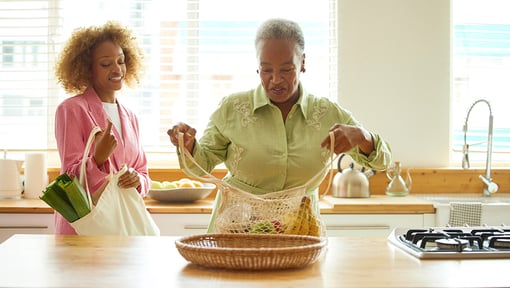
How to manage your food
Avoiding food waste is important on many levels. For starters, it can help you get the nutrients you need out of the food you buy. But equally important is knowing how to plan for, and prepare your food, so that it lasts longer. You can reduce food waste, use your leftovers, or even start a compost.
Here are some tips to help you cut back on food waste:
1. Plan your meals carefully and shop smarter. Create a game plan. Pick your recipes for a few days or a week at a time. Select well-rounded meals with veggies, proteins, whole grains, and fruits. And choose meals that are easy to prepare.
Do an inventory before you shop and then plan your shopping list ahead of time. Only buy the ingredients you know you’ll use (or freeze) before they spoil.
Make this a weekly routine. If a recipe feeds 4 and you’re only feeding 2, halve the recipe. Buy the minimum of what you need. You can frequently substitute missing items from your pantry—like canned or frozen fruits and veggies—rather than buying something new.

2. Store food properly. Did you know you can store fresh fruits and vegetables so that they can last longer? Some fruits, such as apples and bananas, release ethylene gas, which speeds up the ripening of other ethylene-sensitive fruits, like cabbage or broccoli. So, make sure to keep these fruits and veggies separate, whether in or out of the fridge.
Choose the freshest produce that has green leaves, is richly colored, and isn’t limp or yellow. Not all produce goes in the fridge: Onions, avocados, potatoes, and sweet potatoes should go in a pantry or other cool storage area. Potatoes, if exposed to light, can grow sprouts, and eventually rot.
A lot of fresh produce that goes in the fridge will last longer if sealed in a reusable silicon pouch. These containers stay moist, so the fruit or veggies don’t dry out. They also protect from ethylene gas. Refrigerate leafy greens (unwashed and sealed in a plastic bag). In addition, make sure your refrigerator is at the optimal temperature.
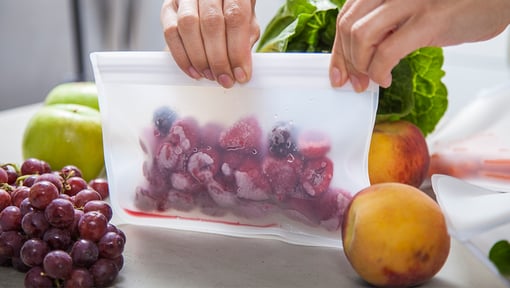
3. Organize your fridge and freezer. To guarantee your items stay cool, store ready-to-eat foods at the top of the fridge (heat tends to rise). Place leftovers in the middle and milk towards the bottom (the coolest spot). Make sure your leftovers are in a prominent spot in the fridge to ensure they get eaten.
In the freezer, place leftovers and other home-prepared foods at the top and then frozen fruits and veggies next. Make sure to freeze foods like fruits and veggies when they are still fresh, rather than mushy. Place seafood next, then beef and pork, and poultry on the bottom. Use good-quality, airtight, microwave- and dishwasher-safe containers.
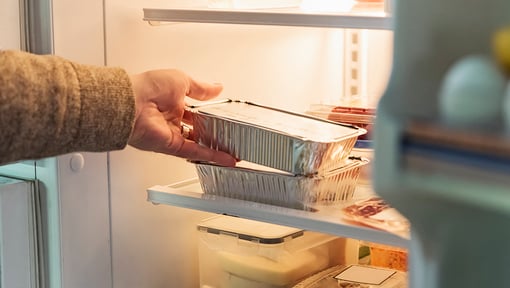
4. Create a system for your pantry. Organizing your pantry can seem like a daunting task. You might have multiple packages of everything—from opened baking soda and pasta to endless jars of stacked spices—some unused for ages.
It is important to create a system. Clean up any duplication. And then start at the bottom. The lower shelves are easier to reach, so you can use this space for daily essentials like cereals, healthy snacks, rice and pasta, or canned goods.
The less frequently used items should go towards the top. These might be your baking ingredients, nuts, or unopened back-up goods like peanut butter or condiments. And make sure to store cooking oils in a cool, dark place. (Exposing oils to light causes them to go rancid more quickly.)
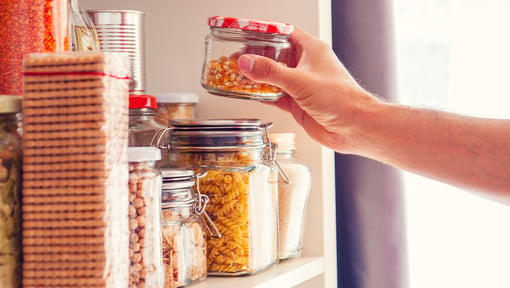
5. Freeze your leftovers. Rather than freezing a lot of leftovers in one container, freeze large batch recipes in smaller, well-divided containers for easier defrosting. This is a smart way to have single-serve meals on hand, too. Use reusable bags to save space. Freeze soups, sauces, and other leftovers in resealable and reusable plastic bags.
It's best to label and date your leftovers. You don’t want them to gather so much ice that the food looks like an Arctic relic. To learn more about freezing and food safety visit the USDA Food Safety Inspection Service.

6. Get creative with scraps. Make soup with leftover veggies, carrot peels, or potato skins. If you’ve cooked a chicken, use the leftover bits to make a delicious stock. Add pasta or rice, onions, carrots, celery, and your choice of spices. You can even use apple peels, strawberry tops, and apricot peels to make jam.
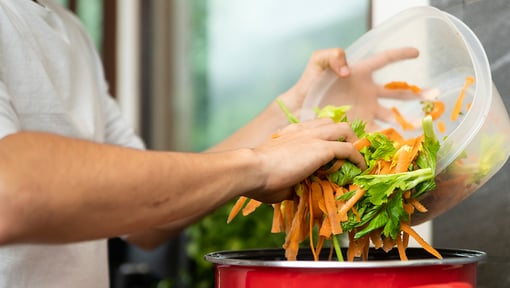
7. Start a compost. No matter what you buy or eat, some food scraps must be thrown away. (Banana peels, avocado skins, and produce pits, among others.) So, what can you do with these and other decomposing food from your household? You can start a compost.
To begin composting, collect food scraps in a counter-top container with a lid and a charcoal filter (which keeps odors away). You can create a compost in your backyard to decompose your food. There are simple DIY ways to build bins affordably or make a compost mix of greens, food scraps, and yard cuttings. You’ll layer these items so that you give oxygen to the microbes that break down the food.
You can also purchase a composter in a store, online, or from your town. In some municipalities, you can get curbside pickup for your food scraps.

8. Donate to food banks. For those unused items in your pantry, you might consider donating to a local food pantry. That canned soup you didn’t use or the box of cereal? Your local pantry can use food that is shelf stable. You can also donate pasta, rice, or peanut butter. (But be considerate and check the “sell-by” date before you donate.)
Keep in mind that you should not donate foods that need to be refrigerated, like produce or dairy products. Check here for a list of what to donate to a food bank and what to avoid.
With some conscious thought and minimal effort, anyone can help reduce food waste and contribute to a healthier planet. Choose just one method and give it a try. As you become more comfortable with the concept, you can try creating your own compost or come up with your own system of using and reducing leftovers.
Not a Silver&Fit® member? Learn more about everything the program has to offer, including more helpful healthy living tips like this, here on our website.
This information is not intended to take the place of regular medical care or advice. Please check with your doctor before using this information or beginning any self-care program. Images used for this article do not depict any members of the Silver&Fit Program.
References
Cleveland Clinic. (2023, March 22). A beginner’s guide to healthy meal prep. Cleveland Clinic. https://health.clevelandclinic.org/a-beginners-guide-to-healthy-meal-prep/
de los Mozos, E. A., Badurdeen, F., & Dossou, P.-E. (2020). Sustainable consumption by reducing food waste: A review of the current state and directions for future research. Procedia Manufacturing, 51, 1791–1798. https://doi.org/10.1016/j.promfg.2020.10.249
Environmental Protection Agency. (n.d.). Food Waste Research. https://www.epa.gov/land-research/food-waste-research
Environmental Protection Agency. (n.d.). Reducing wasted food at home. https://www.epa.gov/recycle/reducing-wasted-food-home
Frischmann, C., & Mehra, M. (2021, October 1). Massively reducing food waste could feed the world. Scientific American. https://www.scientificamerican.com/article/massively-reducing-food-waste-could-feed-the-world/
United States Department of Agriculture. (n.d.). Food Waste FAQs. https://www.usda.gov/foodwaste/faqs
Insights, E. (n.d.). 8 life-changing tips on how to manage food waste at home. Hospitality News & Business Insights by EHL. https://hospitalityinsights.ehl.edu/how-manage-food-waste-home
Ishangulyyev, R., Kim, S., & Lee, S. (2019). Understanding food loss and waste—why are we losing and wasting food? Foods, 8(8), 297. https://doi.org/10.3390/foods8080297
Schanes, K., Dobernig, K., & Gözet, B. (2018). Food waste matters - A systematic review of household food waste practices and their policy implications. Journal of Cleaner Production, 182, 978–991. https://doi.org/10.1016/j.jclepro.2018.02.030
Seattle Public Utilities. (n.d.). Fruit & vegetable storage guide. https://www.seattle.gov/Documents/Departments/SPU//FruitandVegetableStorageGuide.pdf
Stopfoodwaste.org. a (n.d.). Stop food waste. https://stopfoodwaste.org/
This article was written by Kimberley Reynolds, edited by Jason Nielsen, and clinically reviewed by Elizabeth Thompson, MPH, RDN.
